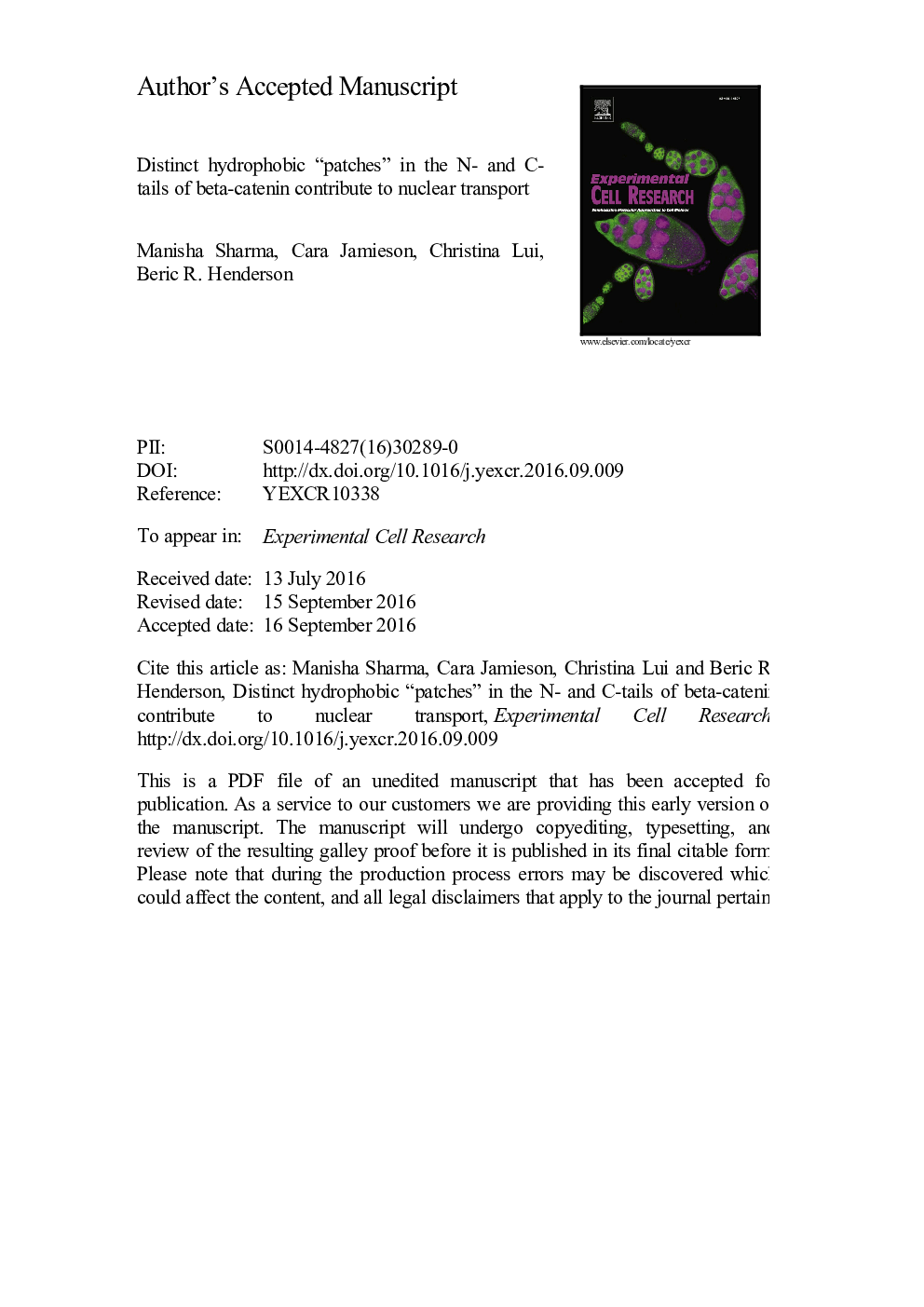| Article ID | Journal | Published Year | Pages | File Type |
|---|---|---|---|---|
| 5527337 | Experimental Cell Research | 2016 | 37 Pages |
Abstract
β-catenin is a key mediator of Wnt signaling and its deregulated nuclear accumulation can drive cancer progression. While the central armadillo (Arm) repeats of β-catenin stimulate nuclear entry, the N- and C-terminal “tail” sequences are thought to regulate turnover and transactivation. We show here that the N- and C-tails are also potent transport sequences. The unstructured tails of β-catenin, when individually fused to a GFP-reporter, could enter and exit the nucleus rapidly in live cells. Proximity ligation assays and pull-down assays identified a weak interaction between the tail sequences and the FG-repeats of nucleoporins, consistent with a possible direct translocation of β-catenin through the nuclear pore complex. Extensive alanine mutagenesis of the tail sequences revealed that nuclear translocation of β-catenin was dependent on specific uniformly distributed patches of hydrophobic residues, whereas the mutagenesis of acidic amino acids had no effect. Moreover, the mutation of hydrophobic patches within the N-tail and C-tail of full length β-catenin reduced nuclear transport rate and diminished its ability to activate transcription. We propose that the tail sequences can contribute to β-catenin transport and suggest a possible similar role for hydrophobic unstructured regions in other proteins.
Keywords
Related Topics
Life Sciences
Biochemistry, Genetics and Molecular Biology
Cancer Research
Authors
Manisha Sharma, Cara Jamieson, Christina Lui, Beric R. Henderson,
